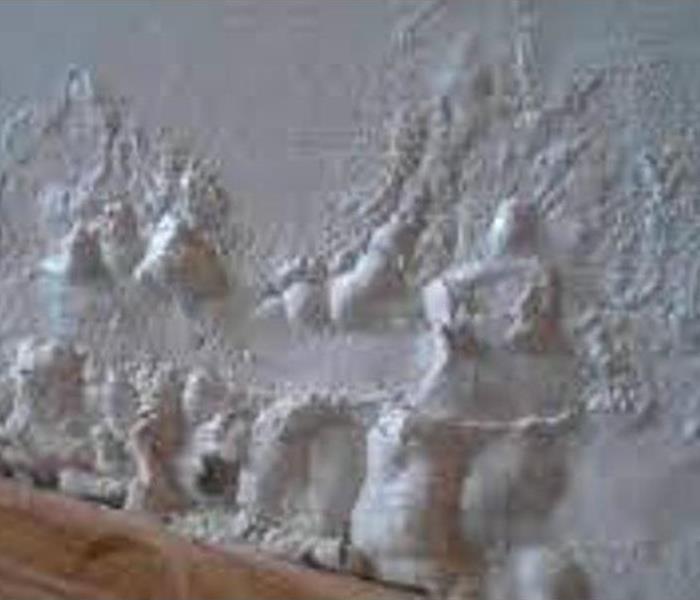HOW WATER DAMAGE CAN AFFECT YOUR WALLS
3/3/2022 (Permalink)
We know just how difficult a broken water pipe or an emergency storm can be. But are you aware of just how terrible water damage can be to your walls? We think naturally of the floors, as the forces of nature that we’re all familiar with tend to drag the water down there. However, the walls are just as important—and, if there’s drywall on your ceiling, you’ll need to be concerned about that too. It’s not just mold and aesthetic damage, either—too much water can lead to a collapse!WHAT CAN WATER DO TO YOUR DRYWALL?
Well, the first thing that you need to know is that water can wick up through the drywall and cause issues. Even if the waternever touched the wall in an emergency, your walls can have plenty of water in them anyway, which can lead to appearance damage and structural issues with the drywall. The water can wick up the walls by 1 inch an hour, meaning that if the water sits for a day without any treatment, the water can be as far up on the wall as two feet.
Once the water is in the drywall, one of two things can happen. The first and most destructive end to the water damage is that of buckling and warping. You might not be familiar with this kind of wall water damage, but it’s definitely worth looking into. If the water saturates the drywall, it will collapse under its own weight. Gypsum (or plaster), being drywall’s main ingredient, is well known to absorb water and get much heavier as a result. The same can happen to your ceiling if it’s made of drywall, as well, with far more disastrous results.
Another big issue is that of mold and mildew. Gypsum is porous, as you might have guessed from its ability to absorb water. Well, because it’s porous and holds water, it can provide a great medium for mold growth both on the outside and the inside. If you start to see or smell the signs of mold, you may end up replacing that portion of the drywall (or the whole thing, if the problem gets too far out of hand).
WHAT IF I HAVE WOOD PANELING?
You’re still not safe from water damage if you have wood paneling. Buckling is not as big an issue for wood paneling, but damage can definitely occur. While the wood should be treated to prevent rotting, there’s always the chance that it’s not, especially if it’s particularly decorative (as treated lumber doesn’t look nearly as nice as untreated). There are also major issues of aesthetic damage, as lumber is extremely susceptible to discoloration and other issues with its appearance. Depending on the lacquer, the wood can lose that as well, meaning that while there’s fewer structural issues with wet wood wall damage, there are more issues of appearance which can cost just as much to fix as the drywall.





 24/7 Emergency Service
24/7 Emergency Service
